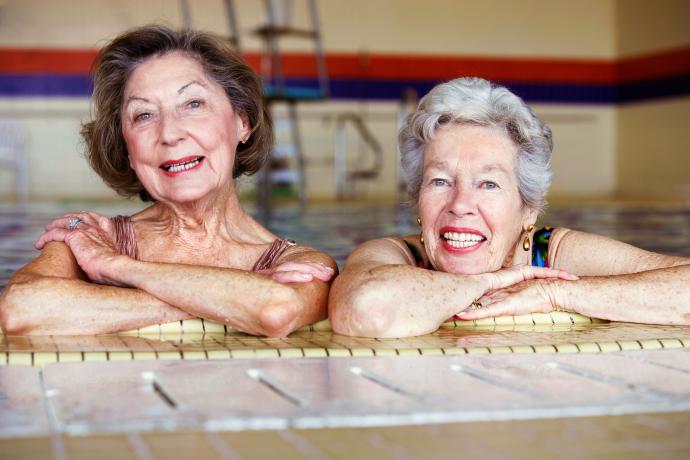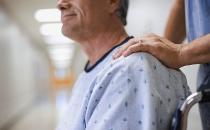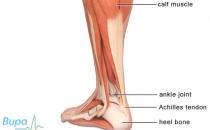Exercise for older people

Being active is an important part of a healthy lifestyle for all ages. But as you get older, your muscles get weaker, you tend to get more aches and pains, and you become more prone to falls and injuries. This may make you less inclined to exercise but it’s important to stay active to maintain your health and independence as you get older.
This article looks at the health benefits of regular exercise for people over 65, different types of fitness and tips on exercising safely.
Why exercise?
Making a start
What sort of exercise should I do?
What if my health is poor?
Aspects of fitness
Action points
Why exercise?
Studies show that many aspects of the ageing process, such as finding it more difficult to get around, can be slowed down by staying physically active for as long as possible. Starting an exercise programme is also a great way to improve your quality of life and make new friends.
There are many health benefits of an active lifestyle. Regular exercise can reduce your risk of developing:
- heart disease and stroke
- diabetes
- osteoporosis, osteoarthritis and back pain
- high blood pressure
- some cancers, such as bowel cancer
Exercise can also improve your muscle strength and tone, which may mean you’re less likely to have an accident or a fall that could lead to an injury. As well as these benefits, regular exercise can improve your:
- flexibility
- mobility, speed and stamina
- cognitive abilities, such as memory and reasoning skills
- sense of wellbeing
- quality of life
Making a start
As with any age group, the level of fitness of older adults varies from person to person. Some people over 65 run marathons, whereas others find it difficult to get out of a chair without help. If you haven't exercised for some time, you may find the idea of taking it up a bit daunting. Try getting started with something you enjoy, focus on the health benefits and ease yourself into your new routine gently.
If you haven't exercised for some time, see your GP for advice before you start. If you have previously had any health complaints, it’s important to tailor your exercise programme to take these into account. Your GP may refer you to a nurse or other health professional to help you with this.
What sort of exercise should I do?
The type of exercise you choose should depend on your level of fitness. If you haven't been physically active for a while, start with gentle exercise for short periods of time. As you get fitter, you can slowly build up to more strenuous exercise for longer periods of time. For example, you could start with a daily five-minute stroll, and gradually build this up to a brisk half-hour walk. Once you feel more confident, you could try a group activity such as walking with a friend, tai chi, bowling, swimming or playing golf – the list is endless.
The UK Department of Health recommends that you aim to do at least 30 minutes of moderate intensity activity a day, five days a week. You don't need to join a gym or an aerobics class to achieve this – activities that are already part of your daily routine, such as walking, housework and gardening, are also great ways to keep fit.
As you get older, your body needs more time to recover after physical activity, so make sure you rest after exercising.
What if my health is poor?
Speak to your GP before you start to exercise if you have a health condition or are recovering from an illness that you think may affect how much you can do. However, don't assume this will stop you from being active. It may be more important than ever that you exercise as this can help you to get better.
If you get any pain, dizziness, shortness of breath, your heartbeat becomes very strong (palpitations) or you have prolonged discomfort while you’re exercising, it’s important that you stop straight away and seek medical advice. This is particularly important if the symptoms don’t go away when you stop exercising.
Aspects of fitness
Having both good muscle strength and aerobic fitness is important in helping you stay independent and able to get around as you get older.
Aerobic fitness
Aerobic fitness is related to the health of your heart and lungs. If you’re aerobically fit, these organs will be able to deliver oxygen around your body more efficiently, so your heart is under less strain. As you get older, your aerobic fitness tends to decrease naturally. You can keep fit by doing any activity that raises your heart rate and makes you slightly breathless – walking, cycling and swimming are all great ways to keep your heart and lungs healthy.
Strength
Muscle strength declines with age – on average, the strength of people in their 80s is about 40 percent less than that of people in their 20s.
Keeping your muscles as strong as possible will make it easier to carry out daily activities and reduce your risk of falls. It will also mean you’re more likely to be able to carry on living independently for longer. Exercise that helps to build and maintain muscle includes everyday activities such as carrying the shopping or doing some gardening. If you’re really keen and belong to a gym, you could try using light weights to increase your muscle strength – an instructor can advise you on what exercises to do. Some strength exercises can also help maintain and improve your balance – yoga and Pilates are particularly beneficial for this.
Action points
- Speak to your GP to help you design an exercise plan.
- Keep motivated – if you exercise with a group, you can all encourage each other.
- Exercise safely – if you feel discomfort, stop and rest, and speak to your GP if necessary.
Further information
Walking for Health
0300 060 2287
www.whi.org.uk
Sources
- Guidelines for the promotion of physical activity with older people. British Heart Foundation National Centre for Physical Activity and Health, 2008, www.bhfactive.org.uk
- At least five a week: evidence on the impact of physical activity and its relationship to health. A report from the chief medical officer. Department of Health, 2004. www.dh.gov.uk
- Be active, be healthy: A plan for getting the nation moving. Department of Health, 2009. www.dh.gov.uk
- Occupational therapy interventions and physical activity interventions to promote the mental wellbeing of older people in primary care and residential care. National Institute for Health and Clinical Excellence (NICE), 2008. www.nice.org.uk
- Liu CJ, Latham NK. Progressive resistance strength training for improving physical function in older adults (Review). Cochrane Database of Systematic Reviews. 2009, Issue 3. doi:10.1002/14651858.CD002759.pub2
Related topics
Benefits of exercise
Cancer – an overview
Diabetes – insulin-dependent (type 1)
Diabetes – non-insulin-dependent (type 2)
Exercise – getting started
Exercise and weight control
High blood pressure
Looking after your heart
Osteoarthritis
Osteoporosis
Stroke
Types of exercise
Walking and health
















